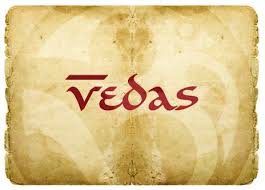Indus Valley Civilization(IVC) - NCERT Ancient History Notes

Indus Valley Civilization(IVC) - NCERT Ancient History Notes
Radiocarbon dating places the Indus Valley Civilization (IVC) between 2500 and 1750 BC. Also known as the Harappan civilization. The site was first identified by excavations in 1921 under the supervision of archaeologist Daya Ram Saani. The long indigenous development of this civilization began at the edge of the Indus Valley in the highlands of eastern Balochistan and eventually spread across the plains.Art and Architecture of the Indus Valley Civilization
Art and Architecture of the Harappan Civilization
The Harappan culture resulted from a long and complex cultural process. Below is a chronology of the three general stages of Harappan culture. It is based on radiocarbon dating from various locations:Geogrphical Distribution
Various archaeological excavations have yielded traces from Stokagendor on the Makran coast (west border) to Uttar Pradesh (east border). The extent of the Indus Valley civilization to Alamgilpur in the border) has been clarified. national borders).Settlement Patterns
Harappa Sites of Various Sizes: Harappa sites vary widely in size and function, from large cities to small idyllic camps. City Planning: The city planning of the Harappan civilization is the most fascinating aspect of their city planning. Almost all important sites (Harappa, Mohenjodaro, Kalibangan, etc.) are divided into his two sections, the citadel on the western side of the village and the lowland town on the eastern side. The streets are cruciform and connected at right angles. It divides the city into several residential areas.House Plans: Houses were mostly built of baked bricks. Most of the doors and windows faced side streets and very few faced the main street. Some buildings have stairs, suggesting that they also had higher floors.
Drainage system: Harappans had a complex and well-designed drainage system. All houses had drain pipes connected to the public sewer system. These drains were covered with manholes.
Rural-Town Interaction: The village-town (rural-town) link has arisen as the urban population depends on the surrounding countryside for food and many other necessities.
Lifestyle
Agriculture The regions shared some common features with respect to soil type, climate and food structure. The area was flat and the only sources of water were monsoons and Himalayan rivers. The agro-pastoral economy is a major feature of the region due to its unique geographical location. Harappan's economy was based on agriculture and pastoralism (raising cattle). The region's resource capacity was sufficient to produce surplus food, a key feature of urbanization. A diversity of lifestyles may also have contributed to their longevity. Animal Husbandry, Hunting, River and Marine ResourcesWild Animals: Bones of wild animals have been found at the Harappa site. These include deer, rhinos, elephants, camels and many other species. Tigers were often depicted in human form, while leopards were less so.
River and Sea Resources: The Harappans made use of the available river and sea resources. Dried fish and mollusks served as important protein-rich elements in people's diets.
Domesticated Animals: Remains of domesticated animals such as humpback and humpback oxen, buffalo, sheep and goats have also been found at the Harappan site.
Foreign Trade
Harappa regularly traded with Mesopotamia. In the Persian Gulf it mainly passed through Oman and Bahrain. The presence of Harappan artifacts such as beads, seals, dice, and other items in these areas supports this theory. Copper, gold, tin, and various semi-precious stones were the most common imports.Standardization A standardized system of weights and measures may have aided trade. Harappa crafts are becoming more standardized. Units of weight and dimensions were also standardized. Cubic plumes made of chalcedony, chert, blackstone, and other materials have been found at all dig sites. The system has lower weights (1:2:8:16:32:64) in binary and upper weights in decimal. These weights were discovered during recent excavations in Harappa. They may have been used to control trade and may also have been used to collect taxes.








